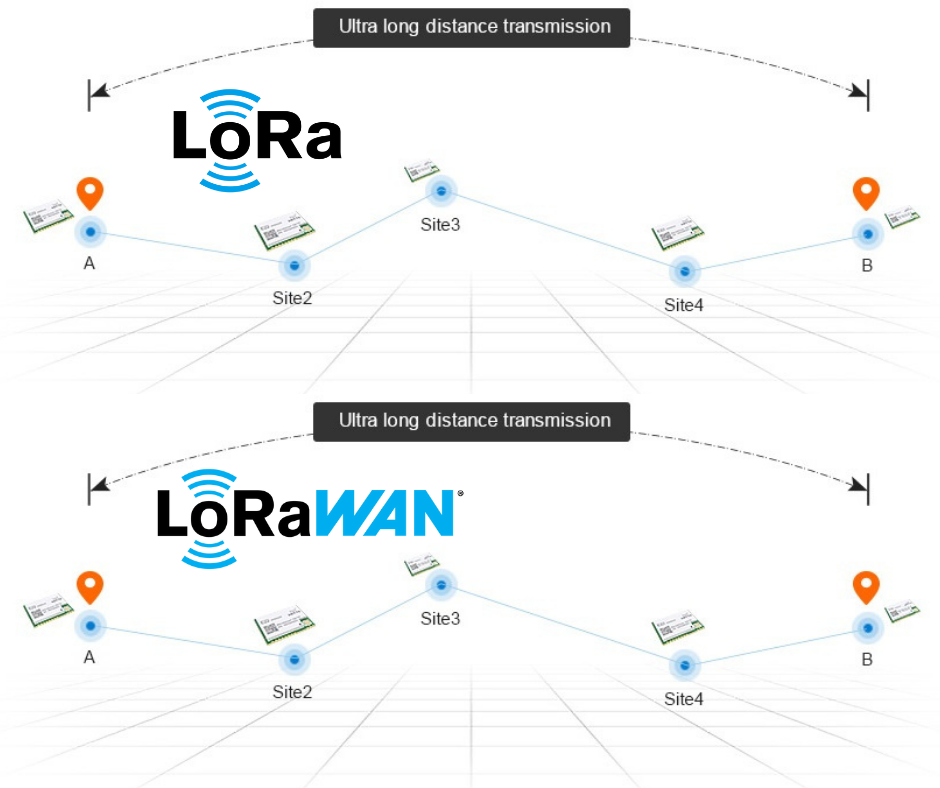LoRaWAN is an open protocol that allows IoT devices to communicate using LoRa. LoRa is a modulation method for specialised wireless spectrum.
Smart agriculture, buildings, cities, the environment, healthcare, residences, industrial control, supply chain and logistics, utilities, and more may all benefit from LoRa devices and the LoRaWAN standard.
What Is LoRa® and How Does It Work?
LoRa is the Internet of Things' de facto wireless platform (IoT). Semtech's LoRa chipsets connect sensors to the cloud, allowing for real-time data and analytics to be shared and used to improve efficiency and productivity. LoRa devices allow intelligent Internet of Things applications that address some of the world's most pressing issues, including energy management, natural resource conservation, pollution control, and infrastructure efficiency.
What Is LoRaWAN® and How Does It Work?
The LoRaWAN open specification is a low-power, wide-area networking (LPWAN) standard based on Semtech's LoRa devices that takes advantage of the unlicensed radio airwaves in the ISM band. The LoRa Partnership®, a non-profit organisation and rapidly expanding technological alliance, is responsible for the standardisation and global harmonisation of the LoRaWAN protocol
Related Link: LoRa HAT (868MHz/433MHz) for Raspberry Pi - Announced
LoRa Technology, It’s Features and Application
 |
| Image Credit: Ebyte |
LoRa Features:
- FSK and LoRa Modem
- Maximum link budget of 170 dB (SX1262 / 68)
- PA with a high efficiency of +22 dBm or +15 dBm
- RX current is just 4.6 mA.
- LDO with DC-DC converter integrated
- Up to 62.5 kbps LoRa and 300 kbps FSK programmable bit rate
- Sensitivity is excellent, down to -148 dBm.
- At 1 MHz offset, blocking immunity is 88 dB.
- In LoRa mode, co-channel rejection is 19 dB.
- Modulation of FSK, GFSK, MSK, GMSK, and LoRa
- For clock recovery, there's a built-in bit synchronizer.
- CAD (Automatic Channel Activity Detection) with a super-fast AFC
LoRa Applications:
SX1261/2 enables a new generation of Internet of Things applications because to its high degree of integration and low power consumption.
- Smart metres are metres that are connected to the internet.
- Logistics and supply chain
- Automation in the construction industry
- Sensors for agriculture
- Cities that are "smart"
- Sensors in retail stores
- Asset management
- Lights on the street
- Sensors for parking
- Sensors for the environment
- Healthcare
- Sensors for safety and security
- Applications for remote control
Posts You May like:
- A hidden speed boost and a 64-bit option are included in the new #RaspberryPi #OS
- Introducing The VisionFive V1 is a RISC-V Based Raspberry Pi Replacement - Available Soon
- Raspberry Pi Zero 2 W Overclocking - Boost Up To 1.2GHz, or even 1.4GHz
- The Arduino UNO Mini Limited Edition is Now Available
- Scan QR Codes with Raspberry Pi Pico
- Create Barcodes with Pure Python
- The New Version of Raspberry Pi OS, Debian "Bullseye" is Now Available.
- The Raspberry Pi Zero 2 W Arrives Six Years After The First Pi Zero
- Raspberry Pi 4 Has Been Given Vulkan 1.1 Compliance by Khronos
- The Raspberry Pi Build HAT - Complete Guide
- Raspberry Pi Officialy Announced Build HAT For Raspberry Pi
- Installing Android on a Raspberry Pi 4 with Google Play Store
- Pop OS Linux is Coming to Raspberry Pi and Other ARM Devices Soon
- How to Immediately Upgrade to Windows 11
- A Secret Update for the Raspberry Pi 4 8GB
- Raspberry Pi Introduces a New Documentation Hub
- Quick start with ESP8266 based Pico WiFi HAT
- Capture local Real-Time Air Quality Data with Raspberry Pi Pico

















.png)




